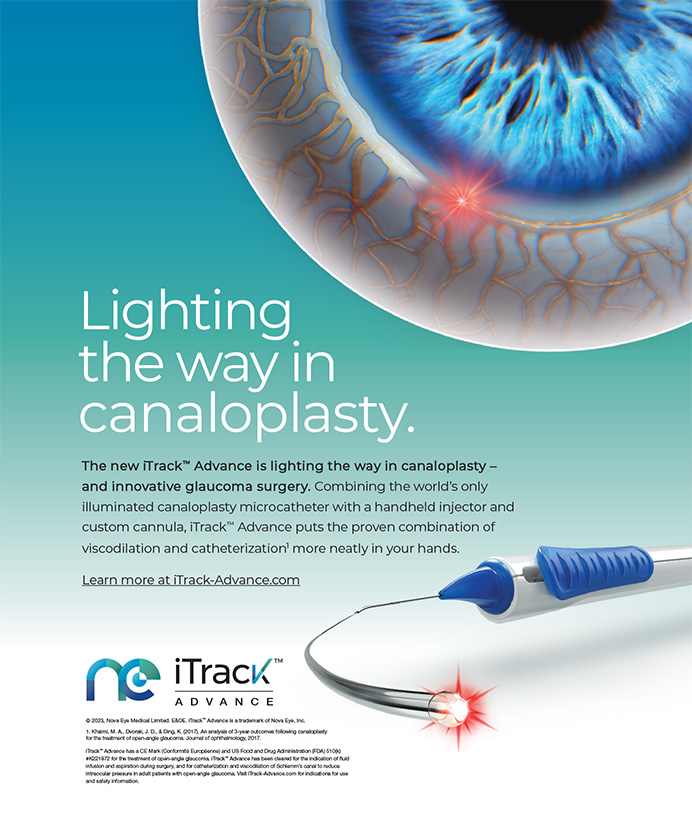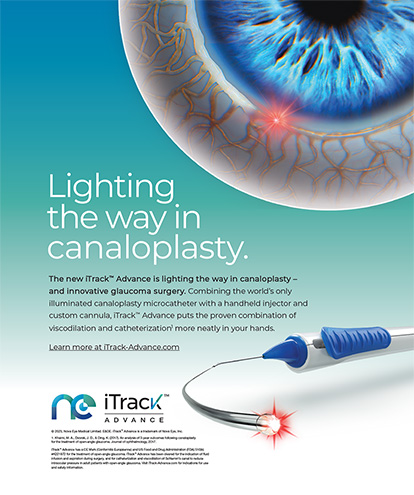I experienced a visceral reaction of shock, disgust, and disbelief in response to the guilty verdict in the case Mark Schiffer vs Mark G. Speaker, MD, Laser and Corneal Surgery Associates, PC, TLC Laser Eye Center, Regina Zyszkowski and Drs. Farkas, Kassalow, Resnick and Associates, PC. Supreme Court of the State of New York, County of New York. Index No. 101191-03. As a New Yorker, ophthalmologist, and refractive surgeon, I followed the case closely.
Mark Speaker, MD, and I have traveled similar terrain during the last 20 years. Both of us were trained in ophthalmology in Manhattan, completed fellowships in corneal and refractive surgery at Wills Eye Hospital in Philadelphia, and came back to New York to train residents and fellows, write peer-reviewed articles, and practice ophthalmology as clinical specialists in corneal and refractive surgery. Dr. Speaker is one of the finest and most honorable ophthalmologists and surgeons I know, and the outrageous verdict is made more so by the character assassination promulgated by the plaintiff’s attorney. This case was not of a bad or a good doctor making mistakes. This case, in my opinion, involved a good doctor incurring a bad outcome; it was not malpractice. If I had seen the patient in 2000, I would have done exactly as did Dr. Speaker. It was the realization that it could have been me that drove the verdict even closer to home.
My first reaction in response to the guilty verdict was constructive. I knew I needed to be more informed regarding the issues and controversies in this case. I obtained a copy of the transcript of the trial and read it in its entirety. I next read the Anatomy of a Lawsuit II series in Cataract & Refractive Surgery Today.1-4 In my opinion, the reporting is unbiased and the representation fair and accurate. The article by Peter Kopff, Esq, Dr. Speaker’s attorney, is particularly enlightening, albeit troubling. The judge in this case, Alice Schlesinger, decided not to allow important and relevant information as evidence, including the fact that Mr. Schiffer had filed a previous multimillion dollar lawsuit, and she decided that his psychiatric records were not admissible. My estimation of the performance of this judge in this case is very low. If you have not read the Anatomy of a Lawsuit II series1-4 from start to finish, you must; it is required reading.
I hope other ophthalmologists are experiencing same level of discomfort with the verdict of this trial as I am. Even if you do not perform refractive surgery, realize that you could be next. We should not avoid these issues but rather should do something about them. Following is my approach to dealing with some of the matters in this case.
GOING TO TRIAL
Ectasia: an Ongoing Problem
Our first obligation always has and always will be to our patients. We need to be better informed about controversial issues and to disseminate information in a timely fashion. There is perhaps no issue as controversial in refractive surgery as ectasia following LASIK. Widespread disagreement continues about the risk factors for ectasia and whether or not particular individual patients are good candidates for the procedure. Although this complication is rare, recognizing risk factors to reduce and perhaps eliminate postsurgical ectasia is important for all ophthalmologists. The AAO and the ASCRS deserve applause for their timely white paper on LASIK and postoperative ectasia, which addresses many of these issues.5
Bad Outcomes: Not Necessarily Malpractice
A misconception of many patients and malpractice lawyers is that a bad outcome equals malpractice. Unfortunately, there will always be bad outcomes in the practice of medicine. I spend a lot of time with patients preoperatively discussing the risks of surgery, and I attempt to document these discussions. For instance, if a patient has any unusual findings such as inferior corneal steepening on topography, high myopia, or high astigmatism, I pointedly discuss with the patient the specific finding and risks, and I document this conversation in the chart. Additionally, at my facility, we have an eight-page informed consent that patients receive before surgery so they have the opportunity to review the risks at their leisure.
Finally, because I do not trust the jury system, I now have an arbitration clause in my informed consent. The arbitration agreement states that, if a patient feels I am guilty of malpractice, he has the right to present his case to an arbitration panel of trained experts rather than go to trial. I have had several patients (usually lawyers) initially refuse to sign the arbitration agreement. In such cases, I explain the issue, and, to date, no patient has refused to sign the arbitration clause; however, should a patient refuse to sign, I would not perform surgery. Several lawyers have stated that the arbitration clause may not hold up in court, but it may help avoid lawsuits.
Expert Witnesses
How can we be angry with the plaintiff’s lawyers when in many cases our so-called colleagues are undermining our profession? I believe there are some “experts” who will testify to anything as long as they are paid their $5,000- to $10,000-a-day fee. I completely support testifying against physicians when malpractice has occurred. When there are large gray areas or your views are discrepant with the norm, please keep your opinion to yourself and outside of a court of law. We should not be held to today’s standards in a malpractice event that took place several years ago.
The plaintiff’s expert in Schiffer vs Speaker et al, Percy Amoils, MD, testified during the trial on cross-examination as follows:
Question: In 1998 there was a case report of a patient in Germany that you cite as showing that people knew about post-LASIK ectasia, true?
Dr. Amoils: Yes.
Question: And are you saying that a single report changes the standard of care of the average physician in the United States of America?
Dr. Amoils: Yes.6
In fact, there was considerable controversy on the issue of performing LASIK on patients with topographic abnormalities that continues to exist today. A case in point mentioned by Buzard et al7 involved 16 eyes of patients with keratoconus who were treated with LASIK. In addition, I would argue that an ophthalmologist who does not perform or believe in LASIK cannot be an expert and should not testify in a LASIK case.
Avoiding Unethical Testimony
Ophthalmologists should contact the AAO ethics committee or the state medical board regarding trial testimony. Furthermore, I believe we need a clearinghouse for expert testimony by both the plaintiff and defense so that there is someone reviewing these cases for accuracy and bias. An idea is to rotate this responsibility among committee members of the AAO or ASCRS so that experts would be responsible for reading one or two transcripts per year and reporting inaccuracies to the state medical board or the AAO ethics committee. It should not be our responsibility to deal with infractions but to recognize and perhaps publicize them as they occur.
Insufficient Malpractice Insurance
The size of the verdict in this case makes it clear that surgeons need more insurance coverage. Following this case, I applied for and received an additional $2 million in coverage for a fairly nominal cost. I have also discussed asset protection with a lawyer. In New York, I have witnessed juries treat malpractice cases as a chance to play the lottery. Although you should always consult with your attorney, regardless of the merits of your case, there are times when you should settle your case if your jury is not truly one of your peers, even if you think you did nothing wrong.
CONCLUSION
As an ophthalmologist, you should contribute to organizations that support physicians, such as Ophthpac, Eyepac, and Ampac. Whether a Republican or a Democrat, as a physician, it is difficult to support a vice-presidential candidate who is a malpractice lawyer, as in the last presidential election. Support politicians who favor tort reform, write letters, make it an issue, and educate your patients. If possible, attend Advocacy Day in Washington, DC, with the AAO. Get to know your legislators personally; they may not agree with you, but they will respect you. Vote against judges who preside over medical malpractice cases and whose actions are negligent and/or improper, and educate others to do the same. Hold political parties that nominate such judges accountable for their actions by writing to them, withdrawing your support for them, and/or voting their candidates out of office. If you suspect unethical, biased, or negligent actions by the judge, contact advocacy agencies to see what legal avenues are available to discipline that judge. Be aggressive. Finally, be proactive in selecting your defense attorney. I actually have worked with Mr. Kopff, and he is one of the finest attorneys I have ever met. You must exercise the same care you would in choosing an attorney to defend you as you would in choosing a physician to treat you for a serious illness. In all cases, it is imperative that you select someone who will best represent your interests.
The Anatomy of a Lawsuit II series did a great job of showing us the problems with the system as it exists today. Improving upon the system is up to us.
Eric D. Donnenfeld, MD, is a partner at Ophthalmic Consultants of Long Island and is Co-Chairman of Cornea and External Disease at the Manhattan Eye, Ear, and Throat Hospital in New York. Dr. Donnenfeld may be reached at (516) 766-2519; eddoph@aol.com.
1. McDermott G, Krafczek A. Anatomy of a lawsuit II. Cataract & Refractive Surgery Today. 2005;5:10:75-104.
2. Kopff P. Mark Speaker’s attorney speaks out. Cataract & Refractive Surgery Today. 2005;5:10:105-108.
3. Trattler WB. Known risk actors for ectasia. Cataract & Refractive Surgery Today. 2005;5:10:109-113.
4. Nordan LT. Lamellar keratorefractive surgery. Cataract & Refractive Surgery Today. 2005;5:10:114-115.
5. Binder PS, Lindstrom RL, Stulting RD, et al. Keratoconus and corneal ectasia after LASIK. J Refract Surg. 2005;21:749-752.
6. TT pp. 414, L 16-23.
7. Buzard KA, Tuengler A, Febbraro JL. Treatment of mild to moderate keratoconus with laser in situ keratomileusis. J Cataract Refract Surg. 1999;25:1600-1609.


